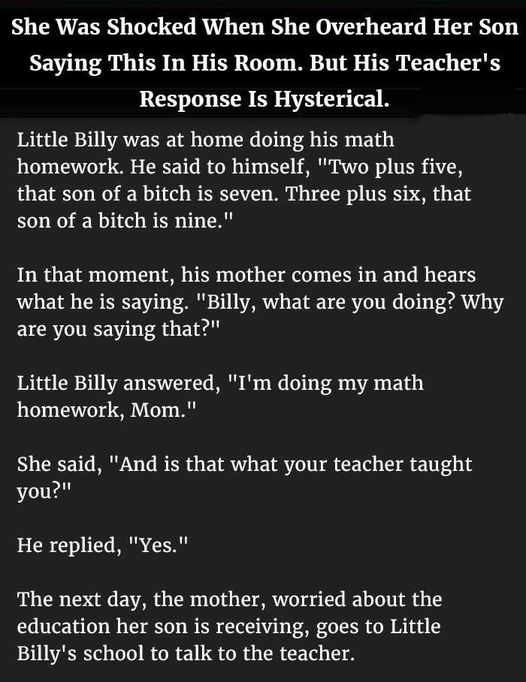You don’t need to make new friends to have a fulfilling social life.
Loneliness has been cast as many things: An epidemic, pervasive, a public health crisis, even deadly. Exacerbated by social distancing measures during the pandemic, the loneliness narrative predates 2020: A 2010 study found that those with weaker social relationships had a higher risk of early mortality than those who did not; a 2018 survey raised the alarm on social isolation, revealing that nearly half of Americans were considered lonely. The dangers of loneliness are innumerable — social isolation is associated with a greater risk of cardiovascular disease, dementia, stroke, depression, and anxiety. Just last month, the US surgeon general released a report stressing the threat of social isolation as well as offering a potential roadmap charting a way out of the loneliness epidemic.
Almost everyone feels lonely on occasion, but chronic loneliness is a consequence of ongoing isolation brought on by busyness, depression, a significant life change — like a move, a breakup, the birth of a child, or some combination of all of the above. Some people’s lives are particularly isolating, especially if they live alone, work remotely, and don’t often interact with others.
On the other hand, too much social interaction can be equally draining. An essential aspect of a well-balanced social life is alone time, a chance to recharge, according to research. A teacher who interacts with students and colleagues all day may not have the bandwidth to volunteer to lead a birding walk. Protecting your energy and time is just as crucial as maintaining social connections; to be a good friend, you have to have the emotional bandwidth to show up for others absent resentment or obligation.
Fending off both loneliness and social exhaustion is a highly specific endeavor. Because everyone’s social lives — and social desires — vary so greatly, researchers are unable to prescribe a set amount of interaction for a fulfilled life. Only we can identify our right dose of time spent with others. We are the Goldilocks to our social lives: trying out different combinations of people and conversations and social contexts. However, we often aren’t paying enough attention to our interpersonal interactions to determine whether we’re feeling socially satisfied. It isn’t until we’re in the depths of loneliness or socially overextended that we realize we need something: a life-affirming talk with a friend, a few pleasantries with a stranger on the bus, or a weekend alone with a good book.
“The really ironic thing is a lot of people don’t have that self-insight, which is shocking because we’ve interacted with people our whole lives — we have friends and we have partners and a lot of what we do every day is talking to other people,” says William Chopik, a social-personality psychologist and an associate professor at Michigan State University. “I don’t think a lot of people sit down and really take stock of the exact amount [of social interaction] that makes them comfortable.”
Being intentional with your interpersonal contact and maintaining a variety of conversation partners are crucial to supporting a healthy social life. Keeping loneliness at bay requires a nominal, yet committed, effort: At the end of a day, week, or month, take stock of with whom you socialized, what kinds of interactions you had, and whether you feel emotionally satisfied to get a clearer picture of your social intake.
How many types of people do you regularly interact with?
At the core of every social interaction is the people who comprise it. Each category of conversation partner — from strangers to romantic partners — all have a role to play in your social ecosystem. A 2022 study found that the more “relational diversity” a person has in their social repertoire, the higher their well-being. Using the analogy of a “social portfolio,” Harvard Business School doctoral candidate Hanne Collins and her colleagues found when people socialize with a range of conversation partners — family members, coworkers, friends, and strangers — on a given day, they report feeling happier than those who converse with fewer “categories” of people.
“If I had 10 conversations yesterday — eight conversations with colleagues and two with friends — then I would have low relational diversity because there’s only two relational categories present,” Collins says. “On the other hand, the more relationally diverse portfolio would be if I had two conversations with colleagues, two with friends, two conversations with a partner, two with strangers, maybe two with my parents. There’s more categories present, and I’m more evenly spreading my time across those categories.” (While the study didn’t measure the duration of each interaction, Collins considers any conversation beyond exchanging “how do you do” as a social connection.)
In a similar 2020 study, Jeffrey Hall, a professor of communication studies and the director of the Relationships and Technology Lab at the University of Kansas, found that people who reported higher levels of well-being and life satisfaction interacted with more people overall. More interactions with close friends and family were associated with lower levels of loneliness as well. However, empty nesters, remote workers, or introverts aren’t inherently lonely, and even married people or those who are not depressed report feeling lonely, according to a 2012 study. Similarly, a 2019 study showed that 71 percent of homebound survey respondents said that despite living alone they did not feel lonely; many reported relying on a network of people they trusted completely.
More social engagements are beneficial — to a point. Over the course of eight studies, published in two papers that examine the physical and emotional impacts of social interaction, Olga Stavrova and her co-authors found that people get the most benefit from as little as one social event a month. “According to this data,” says Stavrova, an associate professor in the department of social psychology at Tilburg University, “if you go out several times a month, that would be enough for you to reach a happiness level that social contact can bring you.” Daily or even weekly social events don’t materially improve well-being. Instead, you might feel overextended. “What happens is that people report worse health,” Stavrova says. “They say they feel physically less well.”
Everyone’s lives are structured differently and sometimes don’t provide an opportunity to interact with a diverse set of people. Parents with a new baby maybe can’t prioritize weekly catch-ups with old friends and leisurely chats with workers at the grocery store. A recent college graduate who relocates to a new city might not have the benefit of a face-to-face social network. You may need to be intentional in seeking out social opportunities, Hall says, whether that’s scheduling a call with your mom, setting a monthly lunch date with a friend, or even asking a stranger if you can pet their dog on your daily walk. “Making a constant effort toward being social will pay off, even if it doesn’t result in a best friend,” Hall says.
What kind of conversations are you having?
A quality conversation is just as important as the quantity of conversations. In his 2020 study, Hall found that meaningful interactions — like laughter-filled hangouts or emotional discussions — adequately keep loneliness at bay. The most effective mode of communication for these interactions is to have them face-to-face (although a phone call is a close second), Hall found in a 2022 study. “The most impactful thing to do is have a meaningful conversation with someone you really like, face-to-face” every day, Hall says. “However, what the evidence also suggests is that just doing any one of those three things — face-to-face, or with someone who’s close [to you], or quality conversation with a stranger — will do.”
Access to your inner circle for these significant discussions is highly dependent on your living situation. Those who live with a partner, roommates, or other family members have greater opportunity for a deep conversation than those who perhaps only interact with their coworkers through a computer screen. “Our daily lives are no longer structured in ways that we are routinely in contact with one another; we instead have to make a choice about it,” Hall says. Even if you can’t see someone you care about in the flesh on a daily basis, Hall suggests interacting IRL with at least one person a day, no matter how well you know them. Texts and social media will never replace the embodied experience of connecting with someone, but they can help fill in the gaps, Hall says. Texting can be used to mitigate loneliness, but according to his research, doesn’t have the same impact as face-to-face quality time.
The best way to prioritize quality interactions is to make them a regular part of your social routine. A recurring hangout — like a monthly meet-up at the park with your friends and their kids or a quarterly FaceTime with a former college roommate — helps keep your social calendar full of ongoing events. Schedule the next get-together before the current one ends while everyone is together. Don’t break the cycle and bail on plans at the last minute.
While it can be painful to be on the receiving end of a flaky friend’s cancellations, Hall says you should continue to put yourself out there socially. If you feel like you lack a network of supportive people that you can see regularly in person, making an effort to chat with strangers or acquaintances can help you feel more connected and these contacts may eventually blossom into friendships. But chronically lonely people who lack a desire to interact need the help of a mental health professional, Hall says.
Do you feel socially fulfilled at the end of the day?
To determine if you’re feeling socially fulfilled, check in with yourself regularly. Reflect on your day or week, Collins suggests. What were the most satisfying social moments? The most lonely? Use this insight to adjust your social calendar. After a day of meetings, chatting with other parents at your kid’s soccer practice, and then dinner with the in-laws, you may feel tapped out. While some events are non-negotiable, you may want to evaluate how you schedule the social engagements that are within your control. “If you’ve gone out the fourth or the fifth time in a week, and you feel like your batteries are drained, and you feel like you don’t have enough energy, part of it is getting people to acknowledge that,” Chopik says. “Then they’ll say, ‘Going out four nights a week is a little too much for me.’ Or ‘I realized if I stay past 9 pm, that’s when I really fall apart and embarrass myself and I get too tired.’”
Perhaps the biggest indicator of needing more social interaction is, simply, feeling lonely. “When you have a day you’re feeling lonely,” Hall says, “it’s actually really important to respond to that in ways that are seeking social contact.” Make plans with a friend, call your mom, talk to someone in your yoga class. In a 2019 study, Chopik gave participants social “challenges” to increase their levels of interaction: asking a friend to get coffee, downloading the Meetup app and going to an event, and organizing a social outing with friends were effective means of becoming more socially active.
Collins says to take advantage of the social opportunities that naturally arise in your day-to-day life. Notice the people walking their dogs in the morning while you head to your car or send your kids to the school bus, the employees at the library or your favorite lunch spot. Try saying hello, then maybe graduate into a longer chat in a week or so. “We are all put in situations where we could potentially have a social connection,” Collins says. “Over time, we create these different types of social connections in our lives if we’re able to foster them in the moments that arise.”



